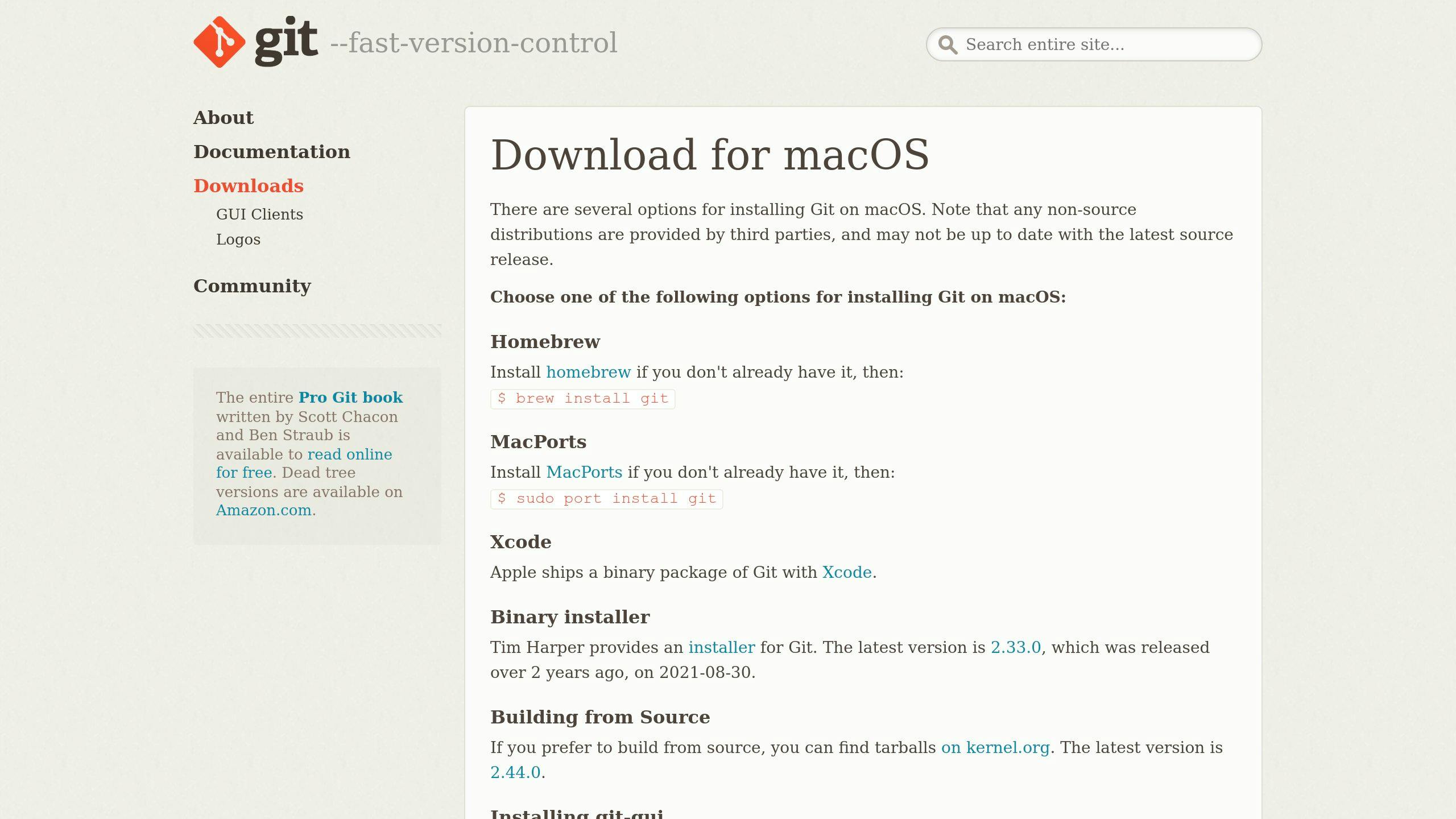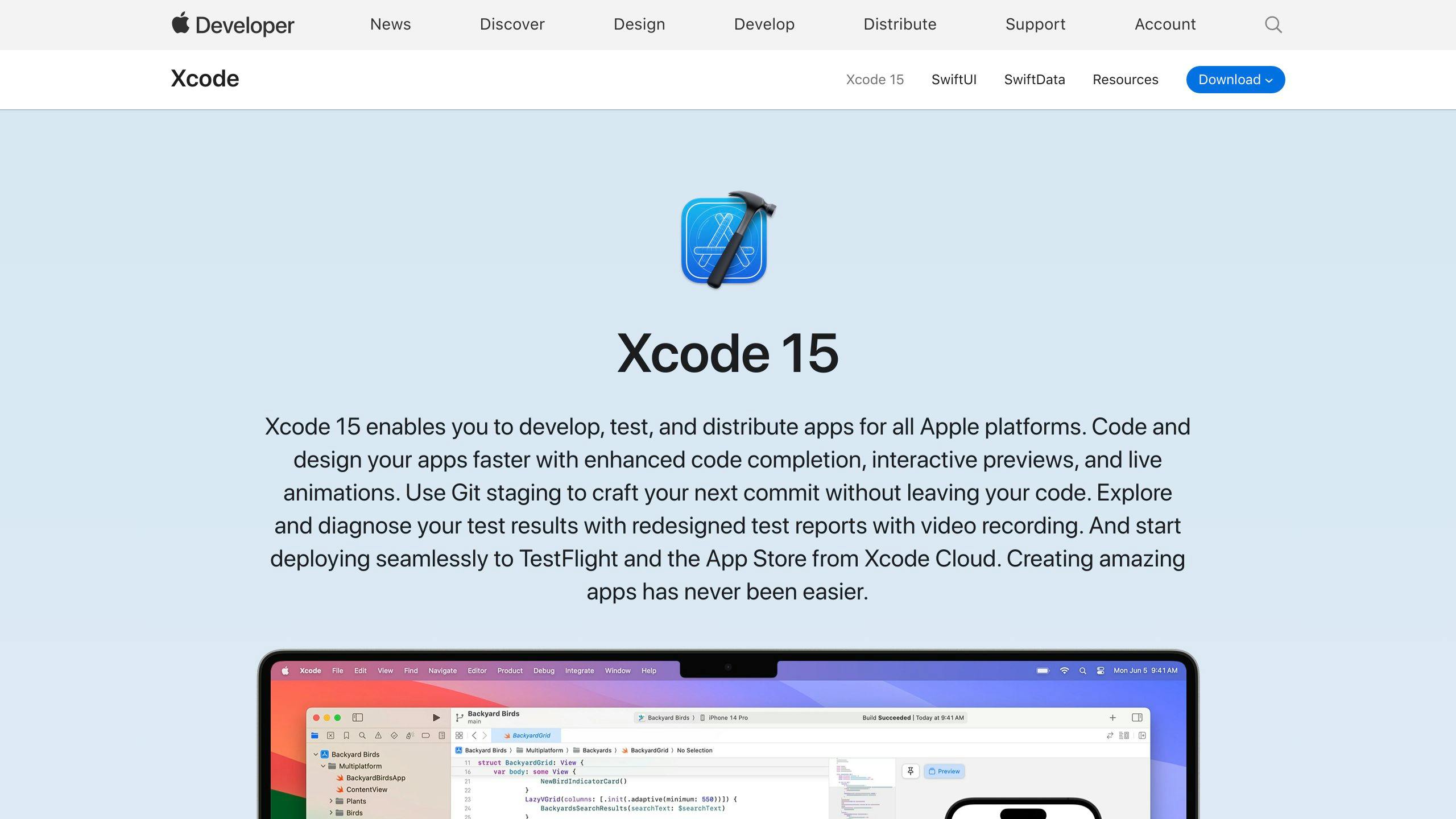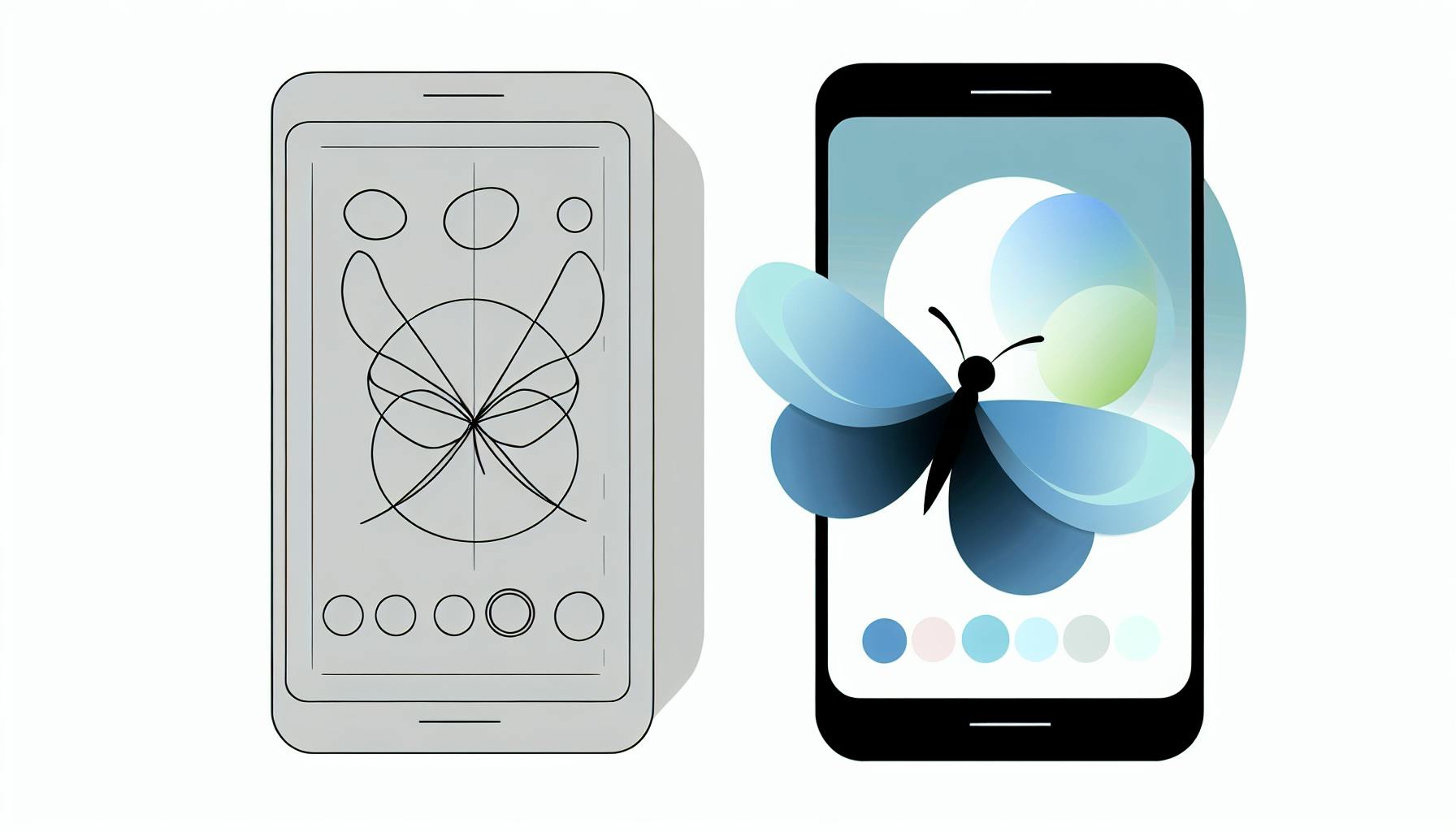Building an iOS app with Flutter is a straightforward process that opens up the power of cross-platform development, using a single codebase for both iOS and Android platforms. Flutter, developed by Google, utilizes the Dart programming language, offering a range of benefits for iOS development including rapid development cycles, cross-platform capabilities, and expressive UIs. Here's a quick guide to get you started:
- Install Flutter SDK and Xcode: Essential tools for iOS app development.
- Set Up a New Flutter Project: Initialize your project specifically for iOS.
- Design Your App's UI: Use Flutter's widgets to create a native iOS look and feel.
- Integrate iOS-Specific Features: Enhance your app with iOS-specific functionalities like push notifications.
- Test on iOS Devices: Ensure your app performs well on both simulators and real devices.
- Prepare and Publish to the App Store: Finalize your app, manage App Store requirements, and release your app to the world.
This guide also covers troubleshooting common issues, ensuring a smooth development and deployment process. Whether you're new to Flutter or looking to expand your app to the iOS platform, these steps provide a comprehensive path to creating a high-quality iOS app with Flutter.
Faster Development
With Flutter, you can see changes to your app as soon as you make them, without having to wait. This means you can work faster because you don't have to stop and compile the app again every time you tweak something. It's like being able to instantly see the paint dry when you're painting a room.
Cross-Platform Capabilities
Flutter lets you use the same code for both iPhone and Android apps. This is a big time-saver because you only have to write your app once, instead of doing it all over again for a different platform.
Expressive UI Widgets
Flutter comes with a bunch of built-in tools that make it easy to design your app. These tools help you make your app look and feel exactly how you want, with smooth animations and a native feel on iPhones. Plus, you can easily add fancy effects without a lot of extra work.
In short, Flutter makes it quicker and easier to create iPhone apps. It lets you work faster, use the same code for different platforms, and design beautiful apps with less hassle. That's why it's a good choice for people making iPhone apps.
Prerequisites
Before you dive into building an iOS app with Flutter, there are a couple of things you need to set up first to make sure everything goes smoothly.
Install Flutter SDK

To kick things off, you need to get the Flutter SDK on your computer. Head over to the official Flutter website and grab the latest version. Follow the steps for your operating system to get it installed.
After you've got it, run this command to check if everything's alright:
flutter doctor
This command helps you spot any problems. Make sure you fix any issues it finds before moving on.
Set Up Xcode and iOS Simulator

For iOS app development with Flutter, you'll need Xcode for the iOS tools and to test your app. You can download Xcode from the Mac App Store or the Apple Developer website.
Once Xcode is set up, create a simulator for different iOS devices to test your app on.
Acquire Apple Developer Account
To put your app on real devices or in the App Store, you'll need to join the Apple Developer Program. This gives you access to important stuff like code signing and certificates, and it costs $99 a year. They also offer programs for businesses and schools.
Review App Store Guidelines

It's a good idea to read through Apple's App Store Review Guidelines before you start. This will help you understand what Apple allows in the App Store and avoid any problems when you submit your app.
Getting these prerequisites in order means you're all set with the tools and accounts you need to start building your Flutter app for iOS. Now, let's get to the fun part - creating your app!
Step 1: Set Up the Development Environment
Getting your computer ready to build an iOS app with Flutter is the first thing you need to do. This means installing the Flutter SDK, setting up Xcode, and getting your simulators or devices ready.
Install Flutter SDK
The Flutter SDK has everything you need to start making apps. Here’s how to install it:
- Go to https://flutter.dev/docs/development/tools/sdk/releases and download the latest version of the Flutter SDK.
- Unzip the file in a place you can remember, like
~/development. - To make sure your computer can find Flutter, add it to your path with this command:
export PATH="$PATH:`pwd`/flutter/bin"
- Check if everything’s set up right by running
flutter doctor.
Install Xcode
You’ll need Xcode for building and testing your iOS app.
- Get Xcode from the Mac App Store or developer.apple.com.
- When you first open Xcode, it might ask you to install some extra stuff like simulators. Go ahead and do that.
Set Up Simulators/Devices
Before you can see your app in action, you need to set up where it will run.
- Simulators: In Xcode, you can create simulators for different types of iPhones and iOS versions.
- Physical Devices: If you have an iPhone, you can connect it to your computer and choose it as the place to run your app in Xcode.
With the Flutter SDK and Xcode ready, you have all the tools to start making your iOS app with Flutter.
Step 2: Create a New Flutter Project for iOS
This part will show you how to start a new project in Flutter, focusing on making an app for iOS.
To kick off your iOS build in Flutter, you need to set up a new project. This gives you everything you need to begin, like the basic code and settings.
Follow these steps to get started:
- Open your terminal or command prompt.
- Go to the folder where you want your project to be. For example, to move to your documents folder, type:
cd Documents
- Create a new project by typing:
flutter create my_ios_app
Change "my_ios_app" to whatever name you prefer for your app.
- Wait for Flutter to set up the project. When it says "All done!", you're ready to move on.
- Go into your new project folder with:
cd my_ios_app
- Now, open the
ios/Runner.xcworkspacefile in Xcode. This is where the iOS-specific code lives. - Pick a simulator (like "iPhone 13") in Xcode and hit the Play button to start your app.
You'll see a basic app open up in the simulator. It has a button that counts when you tap it. This means everything's working, and you're all set to make your iOS app with Flutter!
Next, you can change the Dart code in lib/main.dart to design your app's look and how it works. Whenever you update your code, just press Play in Xcode to see the latest version of your app.
Here's what happens when you create a new project in Flutter:
- It makes the basic code structure and folders for your app.
- It gets your app ready for both iOS and Android.
- It grabs any initial tools and files you need.
- It sets up the basic settings for building your app.
With everything prepared for Flutter iOS development, you can focus on creating your app without worrying about setup details.
Step 3: Design the iOS App UI
When you're making the look and feel of your app for iPhones using Flutter, you want to make sure it's easy and nice for people to use. Here's how to make a user interface that feels just right on iOS.
Use Platform-Specific Widgets
Flutter has special tools called widgets that help your app look like it belongs on an iPhone. Some of these include:
- CupertinoApp - This is the starting point for an app that looks like it's made for iOS.
- CupertinoNavigationBar - A top bar that looks like what you see on iPhone apps.
- CupertinoTabBar - A bottom bar for switching between different parts of your app.
Follow Apple's Interface Guidelines
It's good to make your app's design fit what iPhone users expect. Here are a few tips:
- Make things clear and easy to understand.
- Make sure your app works well for everyone, including people who need accessibility features like bigger text.
- Your app should look good in both light and dark mode.
Craft a Seamless User Flow
Your app should guide users smoothly from one thing to the next:
- Put things where users expect them to be.
- Use smooth transitions when moving between different screens.
- Show loading indicators when your app is busy.
- Keep how users do things in your app consistent.
Add Platform-Specific Touches
Making your app feel like it really fits on an iPhone involves some extra touches:
- Use the fonts and styles that are typical for iOS.
- Add some iOS-style effects, like things that move slightly as you tilt your phone.
- Stick to the usual sizes and spaces for things on iOS.
- Make sure things like scrolling feel just like they do on other iPhone apps.
By using Flutter's tools made for iOS and sticking to Apple's design rules, you can make an app that looks and feels like it was meant for the iPhone. Paying attention to the little details and making everything flow smoothly will make your app a pleasure to use.
Step 4: Add iOS-Specific Features
When building your app with Flutter, adding features that work especially well on iPhones can make your app more useful and enjoyable. Here are a few key things you might want to include:
Push Notifications
Push notifications are messages that pop up on a user's phone, keeping them updated. Here's how to add them to your Flutter app:
- In Xcode, set up everything needed for push notifications, like certificates.
- Use the
firebase_messagingplugin to connect your app with Firebase, a service that sends the notifications. - Ask users if they're okay with getting notifications from your app.
- Make sure your app can handle messages when they arrive by setting up a way to listen for them.
Swift Integration
Sometimes, you might need to use Swift, the programming language for iOS, to do things Flutter can't on its own:
- Write a Swift class that can talk to Flutter.
- Make sure Flutter knows about this class by adding it to a special file (
GeneratedPluginRegistrant.swift). - Now, you can use Swift code in your Flutter app when you need to.
This is great for adding bits of iOS-specific functionality.
Accessing Native APIs
Flutter can also use iOS's built-in features, like location services, camera, and more:
- Look for a plugin on pub.dev that does what you need. There's a plugin for almost everything.
- If there's no plugin for what you want, you can make your own in Swift to use more of iOS's features.
By adding these iOS-specific features to your Flutter app, you're making sure it works well on iPhones, taking full advantage of what the device offers. This approach helps you create a richer experience for users.
sbb-itb-8abf120
Step 5: Testing on iOS Devices
Making sure your Flutter app works well on iPhones and iPads is super important before you share it with the world. Here's a simple guide to testing your app, both on computer simulations of iOS devices and on the actual devices themselves.
Set Up Testing on Simulators
Xcode, the tool we use to build iOS apps, has a feature that lets you pretend you're using different types of iPhones and iPads right on your computer. Here's how to use it:
- Open Xcode and find
Window > Devices and Simulatorsto see the list of available simulations. - Click the
+to add new device types and iOS versions you want to check your app on. - Choose the simulation you want to test with and hit the Play button to start your app.
- Go through your app to see how it looks and works on these simulated devices.
Simulators are quick and easy for checking your app, but it's also crucial to test on real devices before you launch.
Testing on Physical Devices
To try your Flutter app on an actual iPhone or iPad, do this:
- Connect your device to your computer using a USB cable.
- In Xcode, pick your device from the list instead of a simulator.
- Press Play, and Xcode will put your app on your device and start it.
- Use your app, checking everything from how fast it runs to whether all the buttons work.
Here's what you should look out for when testing on a real device:
- How quick and smooth your app feels
- Make sure it doesn't crash when you open and close it a lot
- See what happens when you get calls or texts while using the app
- Check every feature, like tapping buttons and swiping
- Test how it connects to the internet, both on WiFi and cellular data
Testing on real devices can show you problems that simulators can't, like if your app crashes or runs slowly.
Using Firebase Test Lab
If you want to test your app on lots of different iOS devices without having to buy them all, you can use something called Firebase Test Lab. It lets you run tests on many devices at once and tells you how it went.
While it's still good to try your app on a device you have, Firebase Test Lab can help by checking your app in many different situations.
Testing your app thoroughly on both simulators and real devices makes sure it's ready to go live. This way, you can fix any problems and make sure your app is as good as it can be for your users.
Step 6: Prepare for App Store Deployment
Getting your Flutter app ready for the iOS App Store means doing a few important things before you can share it with everyone. Here's a simple guide to help you through this process.
Set Up App Store Connect
App Store Connect is the place where you'll handle all the details about your app for the App Store.
- Sign in to App Store Connect using your Apple ID.
- Check that your app's name and Bundle ID are the same as what you've set in Xcode.
- Fill in all the details about your app like what it does, the categories it fits into, and the keywords people might use to find it.
- Upload your app's icon and screenshots that will appear in the App Store.
- Turn on any special features your app uses, such as push notifications.
Manage Versions and Builds
When you're getting your app ready to submit, keeping track of your build versions is key:
- Increase your build number in Xcode before you make a build archive.
- Ensure the build version number is the same as what you've listed in App Store Connect.
- Write down what's new in each version of your app for the release notes.
Acquire Signing Certificates
Code signing is how your app gets linked to your Apple developer account, proving you're allowed to release it:
- Use Keychain Access to create a Certificate Signing Request (CSR) file.
- Upload the CSR to App Store Connect under Certificates and download the signed certificate.
- In Xcode, under Signing & Capabilities, add your certificate to the project.
Generate and Upload a Build
When your app is all set to be released, you need to upload it to App Store Connect:
- In Xcode, make an archive of your app by selecting Product > Archive.
- Use Xcode Organizer to check and send your archive.
- After App Store Connect gets your upload, it'll process the build and show it.
With all the necessary details, certificates, and build uploaded, your Flutter app is ready to be launched on the iOS App Store!
Step 7: Publish to the App Store
Once Apple says your app is good to go, it's time to put it out there on the App Store. This lets people download and use what you've made. Here's how to get your Flutter app out to the world:
1. Release Your App
In App Store Connect, you'll need to:
- Pick when you want your app to go live, or just release it right away
- Choose where in the world it should be available
- Decide if you want to release it slowly to see how it does
When you're ready, just hit the button to make your app live on the App Store.
2. Monitor Performance
Keep an eye on how your app is doing with App Store Connect's tools:
- See how many times it's been downloaded, how much money it's making, and what people think of it
- Check out how people are finding your app
- Learn about the types of phones and iOS versions people are using it on
- Notice when more people are downloading or using your app
This info can help you make your app better over time.
3. Submit Updates
When you've fixed issues or added new stuff, you'll need to update your app:
- Change your build number in Xcode
- Write down what's new in the update
- Go through the process to submit your app again
- Users will get a message to download the latest version
Updating your app regularly shows users you're invested in making it better.
Getting your app out there is a big deal after all the hard work you've put into creating it with Flutter! Watching how it does and making it better keeps your app fresh and enjoyable for iOS users.
Troubleshooting Common Issues
When you're working on making an iOS build in Flutter, sometimes things don't go as planned. Here's how to deal with some common problems you might run into.
App Crashes on Launch
If your app stops working right when you start it, here's what you can do:
- Make sure Xcode is up to date - Using the latest version helps avoid problems.
- Clean and rebuild your project in Xcode - Go to Product > Clean Build Folder in the menu.
- Check the iOS simulator - If it's acting up, try restarting it.
- Look at crash logs - These can give you clues about what went wrong.
App Rejections from App Store
Getting your app rejected is a bummer, but here are some tips to get through it:
- Read the guidelines carefully - Double-check that your app follows all the rules.
- Test your app well before sending it in - Catch any bugs that might cause a rejection.
- Explain things clearly - If Apple asks for more information, give them clear, detailed answers.
Slow App Performance
If your Flutter app is running slowly, here are some ways to speed it up:
- Profile your app's performance - This helps you find and fix slow parts of your code.
- Reduce redraws - Only update your app's look when necessary.
- Test on older versions of iOS - Sometimes, updates can make apps slower on older devices.
- Streamline your app's design - Too many nested widgets can make your app slow.
Issues Connecting Native Code
If you're having trouble adding your own code to Flutter:
- Make sure you've set up your classes right - Your Swift or Objective-C classes need to be properly linked to your Dart code.
- Be careful with threading - Make sure your native and Dart code are not stepping on each other's toes when they share data.
- Check your platform channels - Your data needs to move smoothly between your native code and Dart.
We hope these simple fixes help you get past some of the hurdles in Flutter App Development for iOS. If you're stuck on something else, just ask!
Conclusion
Flutter makes it easy and efficient to create high-quality apps for iPhones. This guide walked you through setting everything up, making an iOS project, designing a user-friendly interface, adding special iOS features, testing your app thoroughly, and getting it ready for the App Store.
Here's what you should remember:
- Flutter's quick update feature lets you see changes instantly, making app development faster.
- Flutter has a bunch of tools specifically for making apps look and feel right at home on iOS.
- You can make your apps do more by adding notifications and writing some parts in Swift.
- Testing your app on both simulators and real iPhones or iPads is important to make sure it works well.
- Using App Store Connect to handle your app's details and versions helps smooth out the process of getting your app on the App Store.
Beyond the basics, there's a lot more you can do with Flutter:
- Make your app more interactive with animations and gestures.
- Use Flutter's tools to manage how your app changes over time.
- Set up automatic testing and updates.
- Make your app run smoother with Flutter's tools for checking performance.
- Try using Flutter for other kinds of apps, like those for computers.
We hope this guide has made it easier to understand how to create iOS apps with Flutter and helped you get started on making great apps! If you have more questions, just ask.
Related Questions
Can you build an iOS app with Flutter?
Yes, you can use Flutter to make apps for iPhones using the same code you use for Android apps. Flutter turns this code into something iPhones can run really well. It has a bunch of ready-made pieces (widgets) that make it easy to design how the app looks. Plus, you can use Flutter to work with iPhone's own features like the camera.
How do you write iOS code in Flutter?
To add iOS-specific features in a Flutter app:
- Make a new Swift or Objective-C file for the iOS part
- Let Flutter know about this file so it can work with Dart code
- Set up a way for the iOS code and Flutter to talk to each other
- Use this setup to call the iOS code from your Flutter app
This way, you can include features in your app that are just for iPhones.
How do I start Flutter iOS?
To begin making iOS apps with Flutter:
- Get the Flutter SDK on your computer
- Install Xcode to work on iOS apps
- Use a simulator or connect an iPhone to test your app
- Run
flutter doctorto make sure everything's set up right - Start a new Flutter project and open it in Xcode
- Choose where you want to run your app and press Run
This will build and start your app on an iPhone or simulator.
How do I use iOS framework in Flutter?
To use iOS frameworks in Flutter:
- Wrap the iOS framework in a Flutter plugin
- Make the framework's features available through a communication channel
- Write Swift or Objective-C code to use the framework
- Access these features from your Flutter app through the channel
This lets your Flutter app use special iOS features that aren't part of Flutter's standard tools.









